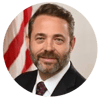Must Read: The DOJ’s $6 Billion Fraud Bust

ebrief, fraud, DOJ, DOJ settlements, DME, Opioid, DEA, Telemedicine, Telecommunication Technology, Telehealth, Telemedicine Fraud, Substance Abuse Treatment Facilities
Despite the national health emergency, on September 30th, the DOJ announced their latest national fraud take down. Because I know many of us have plenty on their plates and other concerns on their mind, I thought I’d break the news down for you by reviewing some of the highlights, lowlights, and details we should all be aware of.
First, let’s start by breaking down some of the details:
345
Total Defendants Charged
$6 Billion
Alleged Fraud Losses
Telehealth, Substance Abuse Treatment Facilities, Drug Distribution
Healthcare Sectors Impacted
Of the more than $6 billion in alleged fraud losses reported was the largest healthcare fraud and opioid enforcement action in Department of Justice history. The breakdown of the financial losses included more than $4.5 billion connected to telemedicine, more than $845 million connected to substance abuse treatment facilities (or “sober homes), and more than $806 million connected to other healthcare fraud and illegal opioid distribution schemes across the country.
Telemedicine Fraud
As noted above, much of the alleged wrongdoing revolved around telemedicine.
“Unfortunately, bad actors attempt to abuse telemedicine services and leverage aggressive marketing techniques to mislead beneficiaries about their healthcare needs and bill the government for illegitimate services.”
- HHS Deputy Inspector General Gary Cantrell

For example, court documents alleged that certain telemedicine executives paid doctors and nurse practitioners to order unnecessary durable medical equipment (DME), genetic and other diagnostic testing, and pain medications, either without any patient interaction, or with only a brief telephonic conversation with patients they had never met with or seen. DME companies, genetic testing laboratories, and pharmacies then purchased those orders in exchange for illegal kickbacks and bribes, then submitted false and fraudulent claims to Medicare and other government insurers.
As the pandemic continues to accelerate the adoption of telemedicine, we can only assume the DOJ will continue focusing their efforts in this space to ensure they identify and prosecute any and every scheme dreamed up by bad actors.
Substance Abuse Treatment Facilities (aka, Sober Homes)
As mentioned, the coordinated fraud takedown uncovered issues with so-called “sober homes.” These sober home cases charged more than a dozen criminal defendants in connection with more than $845 million of allegedly false and fraudulent claims for tests and treatments for vulnerable patients seeking treatment for drug and/or alcohol addiction. Those charged included physicians, owners and operators of substance abuse treatment facilities, and patient recruiters (referred to as “bodybrokers”). These individuals are alleged to have participated in schemes involving the payment of illegal kickbacks and bribes for the referral of scores of patients to substance abuse treatment facilities. Those patients were subjected to medically unnecessary drug testing – often billing thousands of dollars for a single test – and therapy sessions that were frequently not provided, which resulted in millions of dollars of false and fraudulent claims being submitted to insurers.
Regional Busts
In addition to the national announcement, many regional offices of the DOJ announced specific details of cases within their jurisdictions.
For example, the eastern district of New York announced that two doctors, two licensed physical therapists, a licensed clinical social worker, a pharmacist and four pharmacy owners and operators were charged for their participation in various schemes uncovered in the fraud takedown.
One of the New York doctors was charged with illegal oxycodone distribution. The complaint alleged the physician operated two medical offices in Queens, and provided large-quantity oxycodone prescriptions to patients – individuals they never actually evaluated – who were recruited in exchange for cash.
Of note, during a search of one of the doctor’s homes, DEA agents found $150,000 in bundled cash hidden in a lock box.
In another case, a licensed physical therapist and clinic owner, along with the office manager of several physical therapy clinics, were charged in a scheme that allegedly billed Medicare and Medicaid for services that were unnecessary, procured by kickbacks, provided by unlicensed practitioners, or otherwise not provided as billed.
And finally, in the other New York case involving a doctor, the physician was charged with conspiracy to commit healthcare fraud, stemming from his work with a telemedicine company through which he allegedly submitted false and fraudulent claims for DME to Medicare. Between 2018 and 2019, the amount billed to Medicare for the doctor’s DME prescriptions was in excess of $1.3 million. The physician has already pleaded guilty, which was unsealed on September 30, 2020.
These are just some of the cases announced during this year’s enormous, coordinated fraudulent takedown. For a full report on additional case details, visit the following links:
Graphics, Images and Resources:
https://www.justice.gov/criminal-fraud/hcf-2020-takedown/graphics-images-resources
Case Descriptions:
https://www.justice.gov/criminal-fraud/hcf-2020-takedown/case-descriptions
Court Documents:
https://www.justice.gov/criminal-fraud/hcf-2020-takedown/court-documents
To download this blog as a PDF, click the button below.


Questions or Comments?